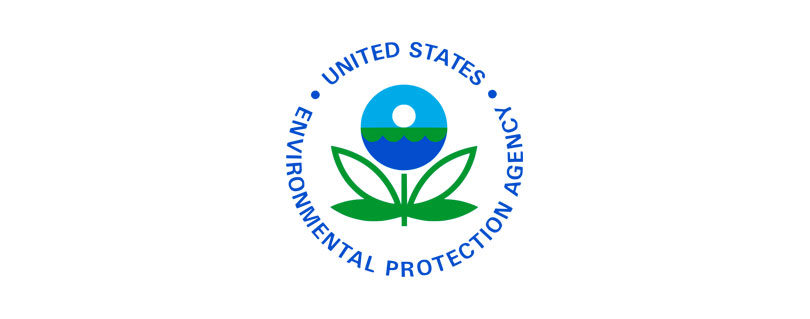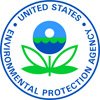EPA Releases Framework for the Implementation of the Greenhouse Gas Reduction Fund as Part of President Biden’s Investing in America Agenda
Publilshed by the U.S. Environmental Protection Agency (EPA)
WASHINGTON (April 19, 2023) – Today, the U.S. Environmental Protection Agency (EPA) released new details about the design of the $27 billion Greenhouse Gas Reduction Fund (GGRF), a first-of-its-kind, national-scale competitive grant program created by the President’s Inflation Reduction Act. This program, part of the Investing in America agenda, will leverage public investment with private capital and finance clean energy projects that reduce pollution and energy costs, increase energy security, and create good-paying jobs, especially in low-income and disadvantaged communities and places that have historically shouldered the burden of harmful pollution. The GGRF will catalyze investment in thousands of clean energy projects, build the capacity of community lenders to drive local economic growth, and deploy cost-saving solar energy on rooftops and in communities across the country.
The release of the GGRF implementation framework comes as the EPA marks Earth Week and the unprecedented investments in protecting the planet and American families and communities as part of President Biden’s Investing in America agenda.
“Thanks to President Biden’s historic investments in America, the Greenhouse Gas Reduction Fund will strengthen the ability of communities across the country to finance projects that reduce air pollution, lower energy costs for families, bolster America’s energy security, and create good-paying jobs,” said EPA Administrator Michael S. Regan. “This innovative program will become part of the backbone of the American clean energy finance ecosystem – and with more than half of the investment going to low-income and disadvantaged communities, it will ensure that all communities can participate in America’s growing clean energy economy.”
This implementation framework follows the initial guidance EPA released earlier this year and outlines a clear vision for the three grant competitions EPA will administer under the GGRF program, including preliminary descriptions of key parameters, application requirements, and reporting obligations.
The release of this framework builds on months of robust stakeholder engagement efforts with input collected from state, local, and Tribal governments; community lenders; environmental justice organizations; industry groups; labor; and environmental finance experts across the country.
The implementation framework is intended to provide continued transparency and respond to stakeholder requests for additional information on EPA’s anticipated program design and application requirements in advance of the Notices of Funding Opportunity that will formally kick off the application process as early as June 2023 and reflect EPA’s final determinations on program priorities and requirements.
EPA will require rigorous transparency, risk management, and accountability measures of grantees under this program to ensure this historic investment is invested efficiently in accordance with the law and for the maximum benefit of American families.
“EPA is proud to release this significant update months ahead of when competitions will open to provide transparency to the public, allow for stakeholder feedback, and give prospective applicants time to form strong visions, partnerships, and application materials,” said Senior Advisor and Acting Director of the Greenhouse Gas Reduction Fund Jahi Wise. “EPA is working diligently to design a program that leverages private capital into pollution reducing clean technology projects while investing resources in the communities that have been left on the sidelines for too long, and safeguarding public dollars to deliver on the potential of this historic opportunity.”
“The Greenhouse Gas Reduction Fund is one of the most transformative actions created in the Inflation Reduction Act to make access to reliable and clean solar power easier for millions of Americans, and the steps taken today will be the blueprint for making this historic program a reality. The GGRF is a giant leap forward for bringing clean energy and reducing air pollution for communities who are too often left behind,” said U.S. Senate Majority Leader Charles E. Schumer (NY). “Delivering on environmental justice was one of my north stars while writing the Inflation Reduction Act, and the GGRF is poised to be one of the most significant vehicles for delivering lasting support to our environmental justice communities. When you invest in renewable energy you are investing in the technology of the future and a better world for our children and grandchildren. I am proud to have led this historic program to passage in the Inflation Reduction Act to lower costs for families and creating good paying jobs securing America’s energy independent future.”
“In the Inflation Reduction Act, we provided EPA with historic resources to address the threat of climate change in a way that benefits communities across our nation,” said U.S. Senator Tom Carper, Chairman of the Senate Environment and Public Works Committee. “Now, I’m pleased to see that EPA is implementing the Greenhouse Gas Reduction Fund to help finance clean energy projects, including in low-income and disadvantaged communities, and create good-paying jobs. By leveraging public and private investments, this program will not only reduce harmful pollution and lower energy costs but also help grow America’s clean energy economy for years to come—a win-win-win.”
“The Greenhouse Gas Reduction Fund is a groundbreaking, first-of-its-kind program that will invest in clean energy deployment and carbon pollution reduction projects across the country, putting us on track to meet our climate goals,” said U.S. Representative Frank Pallone, Jr., Ranking Member of the House Energy and Commerce Committee (NJ-06). “With this announcement, EPA is taking an important step toward getting this much needed funding out to communities to help build a cleaner, healthier, and more sustainable future. I fought hard to make sure this program was enacted into law and appreciate EPA’s work to engage with stakeholders as they design it. I look forward to working with EPA to ensure this funding has the greatest impact, especially for those communities that have been underserved for far too long.”
“As one of the lead authors of the statute underpinning the Greenhouse Gas Reduction Fund investment in climate finance for disadvantaged communities, I am grateful to Environmental Protection Agency leadership for their transparency, collaboration, and progress on making this vision a reality,” said U.S. Senator Ed Markey, Chair of the Environment and Public Works Subcommittee on Clean Air, Climate, and Nuclear Safety (MA). “This program has the potential to unleash tens of billions in much-needed private investments by leveraging the power, expertise, and long-standing relationships that public, semi-public, and non-profit community lenders can bring to bear in a joint national fight against the climate crisis. I look forward to continuing to work with the Administration and to hearing from stakeholders as we continue to work on this coordinated, justice-focused, and urgently needed new program.”
“At a time when working families are struggling to pay their energy bills and are dealing with the devastating effects of climate change, we must expand the use of rooftop solar in America, cut carbon pollution, and help create millions of good jobs,” said U.S. Senator Bernie Sanders (VT). “I am pleased that the Greenhouse Gas Reduction Fund includes a $7 billion ‘Solar for All’ program that I introduced to make it more affordable for low-income and working-class families to install solar on their homes and save money on their electricity bills. I look forward to continuing to work with stakeholders and the EPA on this program to make residential solar a reality for the millions of low-income and working families who need it the most.”
“A national climate bank network will generate more clean energy, fewer emissions, and more good paying jobs across the country. That’s why I worked to craft legislation to make this a reality, and I’m encouraged to see the EPA take the next key step toward launching this program. This framework reflects true progress for a self-sustaining climate bank network that will dramatically boost our financial capacity to deliver the economic and environmental benefits we’ve fought for so long to secure,” said U.S. Senator Chris Van Hollen (MD).
“The Greenhouse Gas Reduction Fund is the single largest investment in clean energy and environmental justice in American history, based on proven green bank models that have been effectively enacted across the country,” said U.S. Representative Debbie Dingell (MI-06). “This new guidance from the EPA today is an important step forward in making sure we successfully implement the Greenhouse Gas Reduction Fund to ensure these funds reach the communities and projects that need them most, prioritizing low-income and historically disadvantaged areas. I’ll continue working with the EPA, my colleagues in Congress, and all our partners as we continue to move closer to an equitable clean energy economy.”
Greenhouse Gas Reduction Fund Grant Competitions
EPA will hold three complementary competitions to strategically distribute grant funding under the $27 billion GGRF program. While each competition will be administered separately, EPA expects that these competitions will work in tandem to deliver tangible benefits including lower energy costs, good-paying jobs and improved public health outcomes to households, businesses, and communities. The three competitions will be:
- The $14 billion National Clean Investment Fund competition will fund two to three national nonprofits that will partner with private capital providers to deliver financing at scale to businesses, communities, community lenders, and others, catalyzing tens of thousands of clean technology projects to accelerate our progress towards energy independence and a net-zero economic future.
- The $6 billion Clean Communities Investment Accelerator competition will fund two to seven hub nonprofits with the plans and capabilities to rapidly build the clean financing capacity of specific networks of public, quasi-public and non-profit community lenders—including community development financial institutions (including Native CDFIs), credit unions, green banks, housing finance agencies, and minority depository institutions—to ensure that households, small businesses, schools, and community institutions in low-income and disadvantaged communities have access to financing for cost-saving and pollution-reducing clean technology projects.
- The $7 billion Solar for All competition will provide up to 60 grants to States, Tribal governments, municipalities, and nonprofits to expand the number of low-income and disadvantaged communities that are primed for residential and community solar investment—enabling millions of families to access affordable, resilient, and clean solar energy.
EPA will implement these programs in alignment with President Biden’s Justice40 Initiative, which aims to ensure that 40% of the overall benefits of certain Federal investments flow to disadvantaged communities that are marginalized, underserved, and overburdened by pollution. EPA expects to open competitions for funding under the Greenhouse Gas Reduction Fund by summer 2023.
Stakeholder Engagement
EPA invites written technical feedback and comments on the competition descriptions as the Agency prepares the final Notices of Funding Opportunity for release as soon as June 2023. Stakeholders may send their written feedback to ggrf@epa.gov by 11:59pm ET on May 12. To advance inclusivity and transparency, EPA will convene six public listening sessions on this implementation framework over the next two weeks. Listening session details and other information about the program can be found on the GGRF website. Consistent with EPA Order 5700.5A1, EPA’s Policy for Competition for Assistance Agreements, EPA staff will not meet directly with prospective applicants or their representatives to discuss this competition or otherwise provide any potential applicant with an unfair competitive advantage.
Read the full article at: https://www.epa.gov/newsreleases/epa-releases-framework-implementation-greenhouse-gas-reduction-fund-part-president



